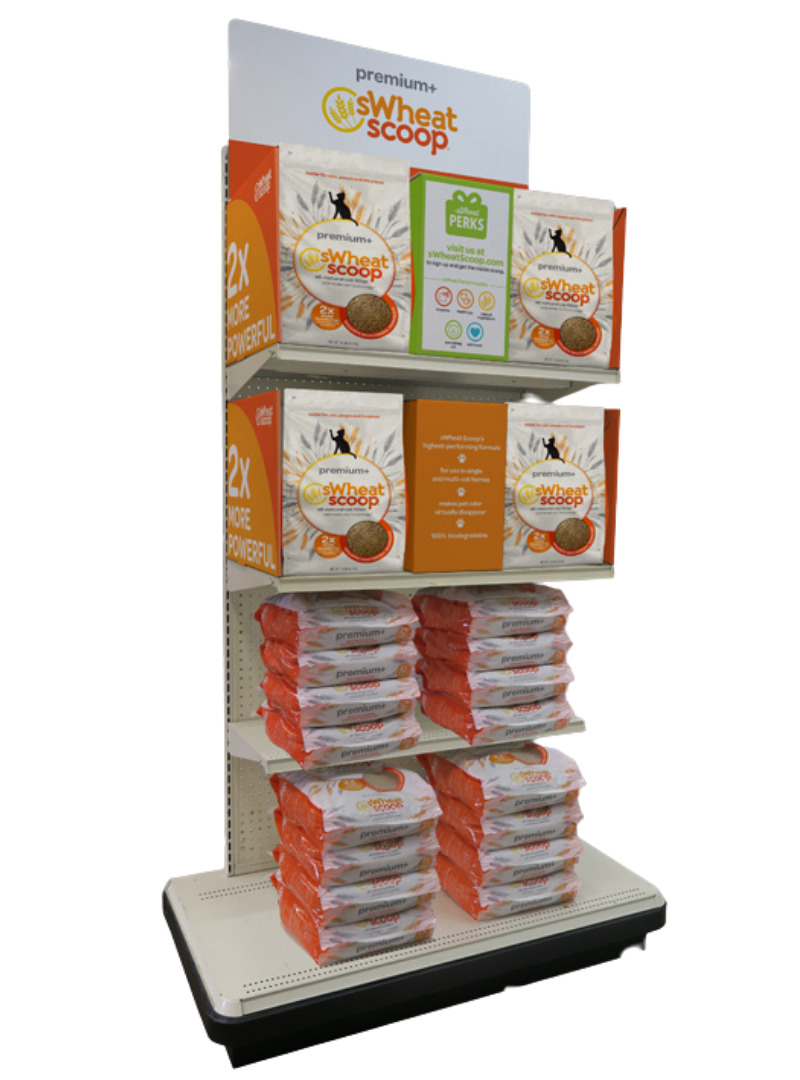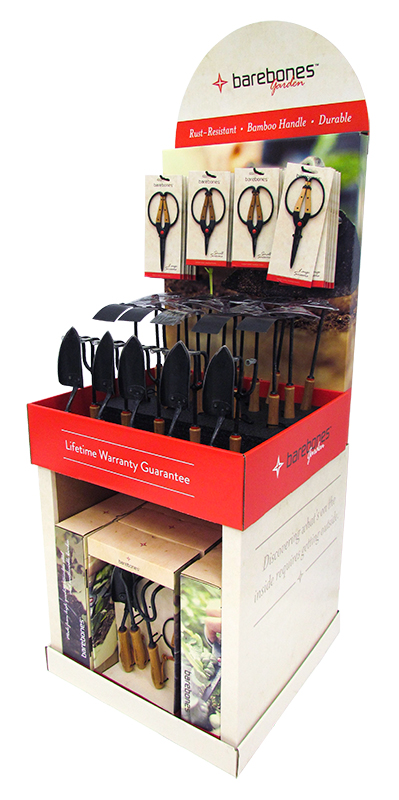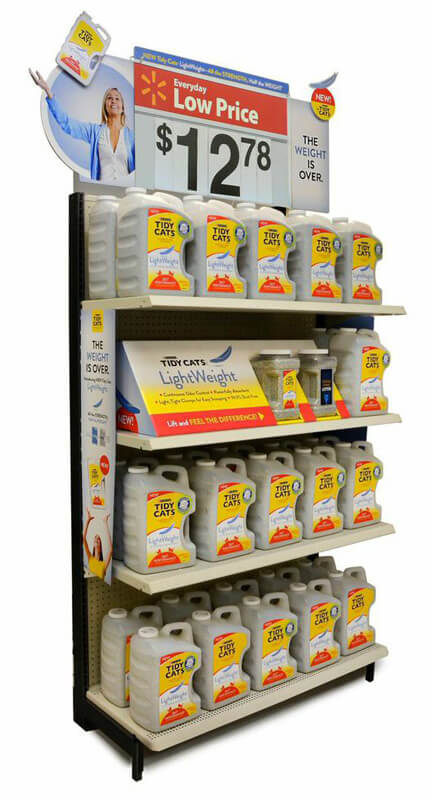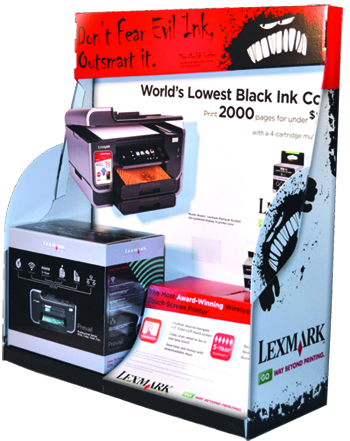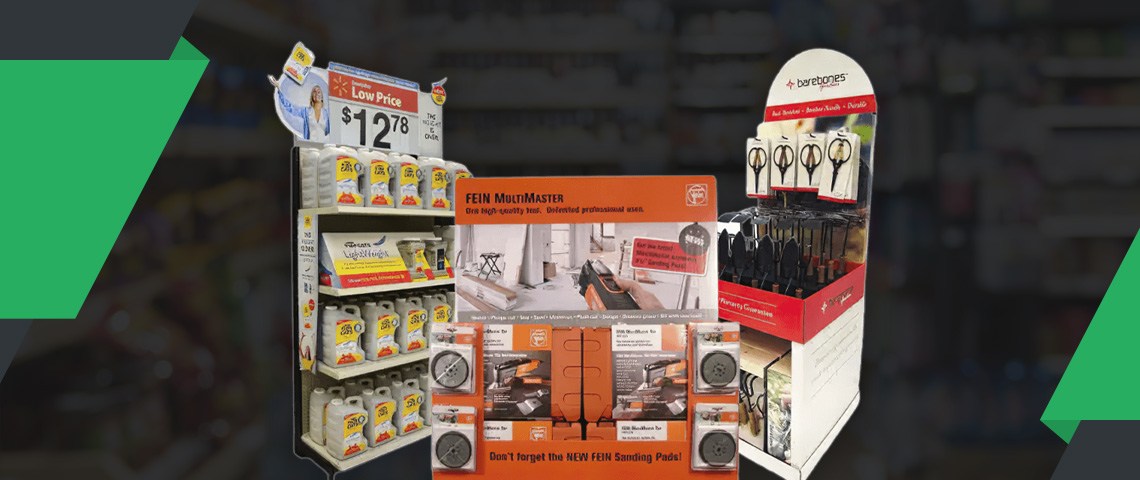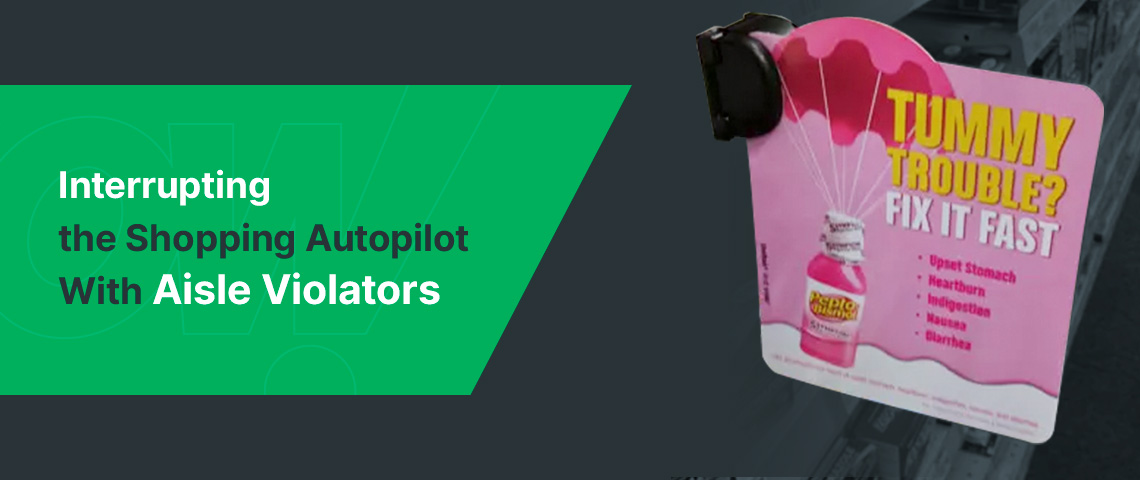Encap displays are great for bringing attention to products, especially ones that have discounts or ones that are new. They can be used to promote popular products and are convenient for the customer to grab and go.
End Cap Displays
What Makes Us Different?
Custom Displays
Everything Under One Roof
Speed
60 Years of Experience

Endcap Displays Pricing Guide
500 QTY: $65-$70 per display
1000 QTY: $45-$50 per display
2000 QTY: $35-$40 per display
Factors that go into the pricing of our custom-designed and manufactured displays include:
- Quantity
- Structure
- Size
- Print Method
End Cap Displays Examples
Get Your Display Project Started
Retail Display Solutions from Creative Displays Now

Contact Form

Our Comprehensive 5-Step Process
Achieving retail excellence with our end cap displays involves a clear, straightforward process:
- Design: Collaborate with our experts to tailor the design to your specific needs. With decades of experience, we understand what works best in retail environments.
- Prototyping: Review and approve a prototype before full production begins.
- Printing: Utilize our advanced printing technology for crisp, clear and vibrant display graphics. Our capabilities include lithography, flexography and digital printing, providing a wide range of finishes and color options.
- Manufacturing: Rely on our precision manufacturing processes to create durable and attractive endcap display installations.
- Distribution: Count on our efficient logistics for timely delivery and setup at retail locations. Our central location enables quick and reliable delivery across North America.

Working With Creative Displays Now
When it comes to unique retail end cap displays, Creative Displays Now offers unparalleled customization and quality options. Every stage of our process — from expert design to reliable distribution — happens under one roof. This in-house system gives us control over the quality and speed of every single project, for results you can count on.
Our process begins with end cap design, where we’ll help bring your ideas to life. We can customize your end cap displays to include specific logos, colors, branding and language. We’ll also tailor displays to your size and shape preferences.
After sending you a prototype of your display, we’ll begin printing. A range of in-house printing capabilities gives you control over how your final result will look. We then manufacture your cardboard end cap displays and deliver them to retail locations. With our over 99% on-time record, you can count on deliveries coming exactly when you expect them.

The Advantages of Choosing Our End Cap Displays
End cap displays offer numerous advantages, making them an excellent choice for enhancing product promotion and driving sales. Benefits include:
- Increased exposure: Situated at the end of aisles, these cardboard displays capture maximum shopper attention.
- Strategic product placement: End caps enhance the visibility of new or featured products, directly influencing buyer behavior.
- Enhanced brand recognition: Our custom end cap displays feature your branding prominently, helping reinforce brand recognition and making a strong impression on shoppers.
- Optimized store space: By utilizing the ends of aisles, end cap displays free up valuable shelf space, allowing for a more organized and spacious store layout.
- Eco-friendly build: Our corrugated displays are 100% recyclable and made of up to 95% post-consumer waste, supporting your sustainability goals.
- Cost-effective alternative: Corrugated displays offer a budget-friendly marketing solution without compromising on quality or durability, making them ideal for seasonal promotions and product launches.
- Durable designs: Despite their lightweight nature, our cardboard displays are robust and durable, capable of holding substantial product weight.
- Wide selection: We offer a wide range of end cap displays. Some of the most common options include floor stand end caps, waterfall end caps, graphic wrap end caps, end cap shelf displays and half pallets.
Frequently Asked Questions
Endcap displays can boost sales by bringing the product directly to the path that a customer is walking on. They make the products easy to grab, make the customer excited about the products, and they can offer promotions that will encourage the customer to buy more.
Yes! Endcap displays are great for offering temporary products and displays. Your brand can easily promote seasonal products or a limited deal with endcap displays.

Take Your Retail Strategy to the Next Level With Our End Cap Displays
Partner with Creative Displays Now to improve your retail sales with custom end cap displays that captivate and convert customers. Our team is dedicated to delivering high-quality, tailored solutions that meet your unique needs and exceed your expectations. Connect with us today to discuss your requirements or get a free estimate.


